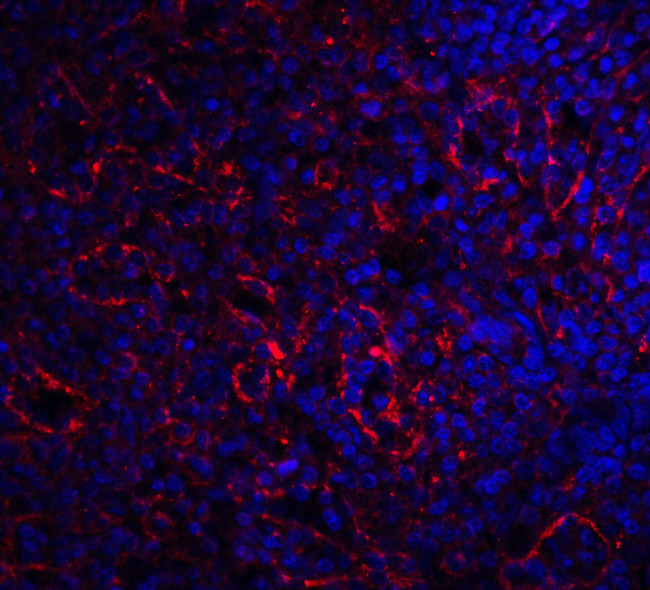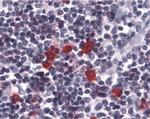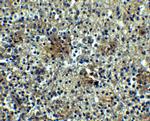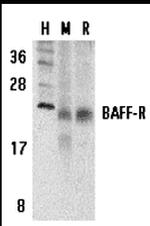Search Thermo Fisher Scientific
Product Details
PA5-20013
Species Reactivity
Host/Isotype
Class
Type
Immunogen
Conjugate
Form
Concentration
Purification
Storage buffer
Contains
Storage conditions
Shipping conditions
RRID
Product Specific Information
A suggested positive control is human spleen tissue lysate.
PA5-20013 can be used with blocking peptide PEP-0132.
Target Information
Tumor necrosis factor receptor superfamily member 13C (TNFRSF13C), also known as BAFFR, is a protein in humans is encoded by the TNFRSF13C gene. The BAFFR gene is mapped to chromosome 22q13. 1-q13. 31. It has got 184 amino acid transmembrane protein which is 56% identical to the mouse protein. B cell-activating factor (BAFF) enhances B-cell survival in vitro and is a regulator of the peripheral B-cell population. BAFF plays a crucial role in B cell development and can function through receptors other than BCMA.
For Research Use Only. Not for use in diagnostic procedures. Not for resale without express authorization.
References (0)
Bioinformatics
Protein Aliases: B cell-activating factor receptor; B-cell maturation defect; B-cell maturation defect 1; B-cell-activating factor receptor; BAFF receptor; BAFF-R; BLyS receptor 3; CD268; Tumor necrosis factor receptor superfamily member 13C; tumor necrosis factor receptor superfamily, member 13C
Gene Aliases: 2010006P15Rik; BAFF-R; BAFFR; Bcmd; Bcmd-1; Bcmd1; BR3; BROMIX; CD268; CVID4; Lvis22; prolixin; RGD1560810; TNFRSF13C
UniProt ID: (Human) Q96RJ3, (Mouse) Q9D8D0
Entrez Gene ID: (Human) 115650, (Rat) 500910, (Mouse) 72049

Performance Guarantee
If an Invitrogen™ antibody doesn't perform as described on our website or datasheet,we'll replace the product at no cost to you, or provide you with a credit for a future purchase.*
Learn more
We're here to help
Get expert recommendations for common problems or connect directly with an on staff expert for technical assistance related to applications, equipment and general product use.
Contact tech support




